 Exoplanets Photographed!
Exoplanets Photographed!
Quickie:
They got a photo of a planet around another star, and they’ve confirmed that it is actually a planet. (Actually, there are two discoveries, one planet around Fomalhaut, and three planets around, get this, HR8799.)
An Actual Photo!
Eee gad! We finally did it. Although the current count of detected exoplanets is up to about 322, we don’t have photographs of any of those. Sadly. Over the years, there’ve been a number of false alerts, but none panned out. Most notable in my memory was May of 1998, about a month after I was hired here – they thought they found a protoplanet ejected from around a star in Taurus. Eventually they decided it was just a star in the background.
Fomalhaut? Really?
Okay, so one of the other things I find awesome about this is that the planet is around Fomalhaut (they pronounce it FOAM-al-hot). Fomalhaut is a first-magnitude star. That’s darn bright. I was expecting the first image of a planet to be around some dim little nothing star in a nothing constellation. You can see Fomalhaut tonight – look low in the South, for a bright star – and that’s where it is.
What Makes This One a Planet?
Mostly we’re finding big, high-mass planets around other stars. The problem with candidates we’re photographing is that they’re even bigger – big enough and bright enough that we can see them. Big enough and bright enough, that they generally turn out to be dim stars, not planets. This planet is in a ginormous dust ring (see the diagram). If the planet had a large mass, you’d see it mess up the dust ring – the dust would be attracted to the planet, there would be tracks and all sorts of fun physics. There isn’t. The dust ring is undisturbed. That puts an upper limit on the mass of this planet, so we can be sure it is small enough to qualify as a planet (less than 13 times the mass of Jupiter).
This planet is between the mass of Uranus and three times the mass of Jupiter.
The “Marois Trio”
Parallel to Hubble’s discovery, Christian Marois (et al) of the Gemini Observatory also just released a paper detailing their photograph of three planets going around the star HR8799 in Pegasus. This one is a little harder to see (you need binoculars), but the fact that there are three planets all orbiting the star, points to the fact that this is also, pretty definitely, actual planets and not stars.
Where do I look?

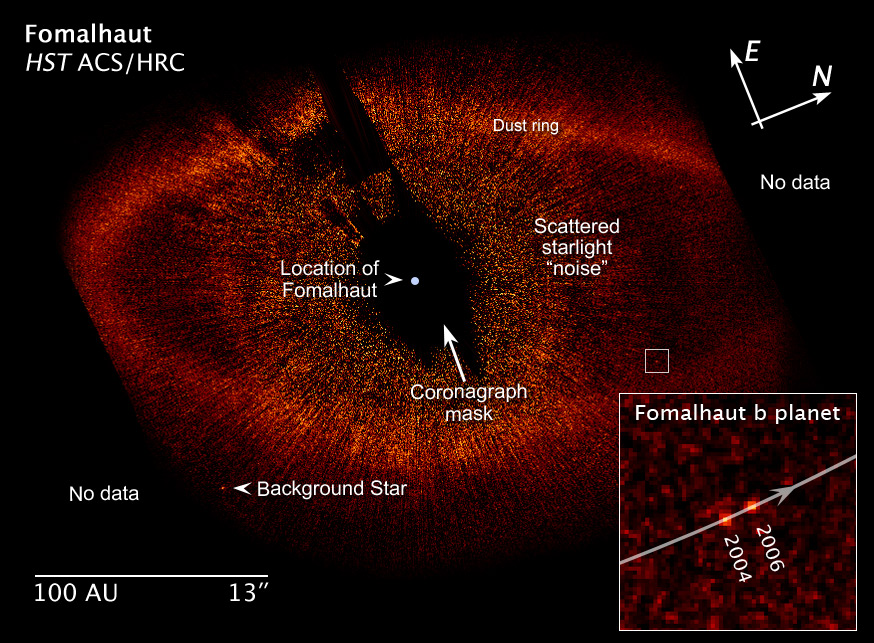
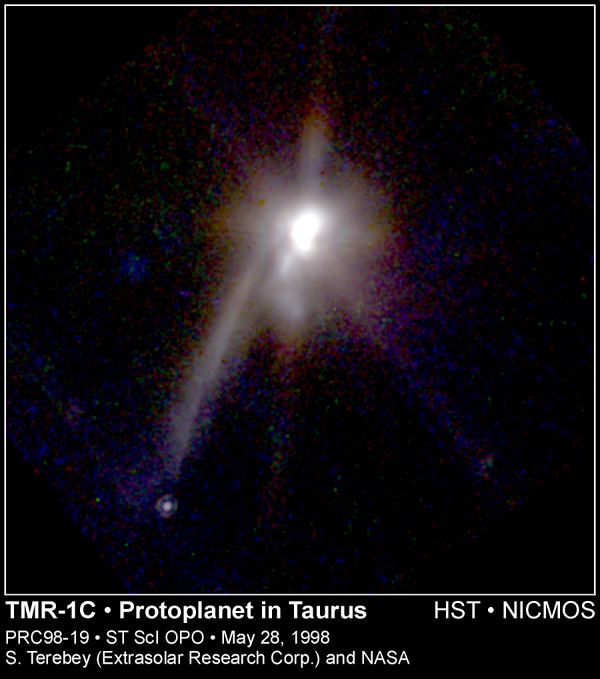

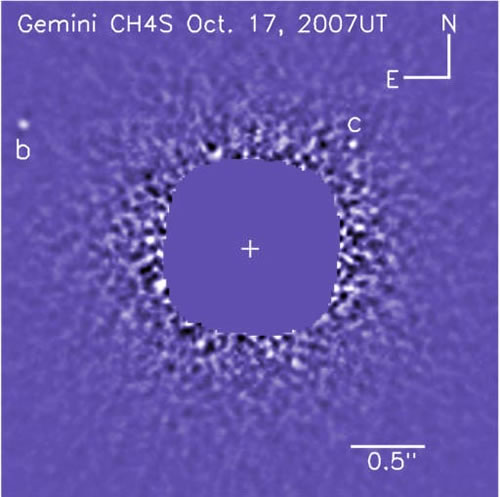
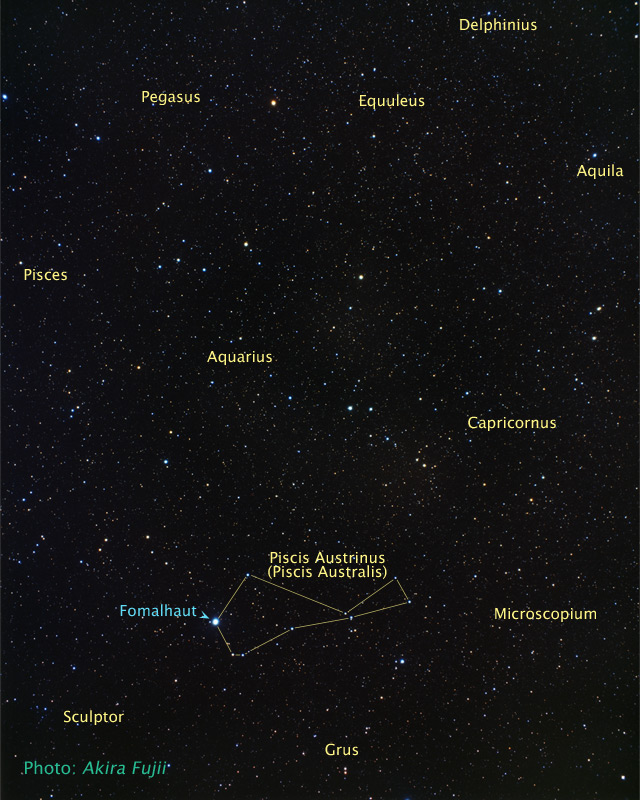
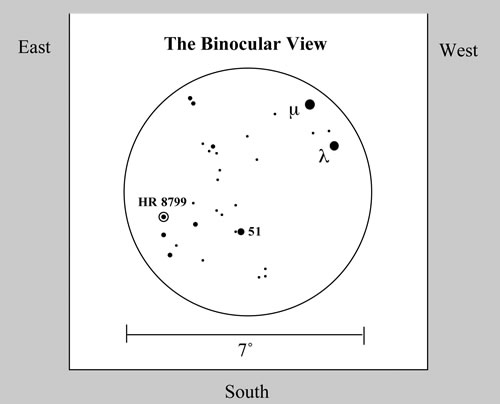




Ooo, very cool :) Is this something you’d feel comfortable talking to the media about if I pitched it?
Sweet, I was hoping you’d send something out about this. :-)
Whoa, that’s sweet!
Very cool.
I noticed two typos, if you want to fix them:
1. Fomalhaut? Really?
Okay, so one of the other things I find awesome about this is that the planet is around Fomalhaut (they pronounce it FOAM-al-hot). Fomalhaut a first-magnitude star.
Missing “is”.
2. Is it Marios or Marois? You have it both ways:
The “Marios Trio”
Parallel to Hubble’s discovery, Christian Marois (et al) … and also Marios in the picture credit.
Fixed the typos.
Hi Alice,
This is great. (Unfortunately the computer here at the library is keeping me from opening the attachments. I’ll have to wait til I’m back at the Science Center.) I didn’t see any reference to analyzing the spectra of the planets, but surely someone must be doing this. I notice that the diagrams give the planets circular orbits, but we’ve learned that highly elliptical orbits are more common. I wonder what orbits these planets actually have. Also, I wonder whether the planets can also be detected by wobbles in their stars or by occultations of their stars. That would give us more information about them. Howard
Sauron is watching us….